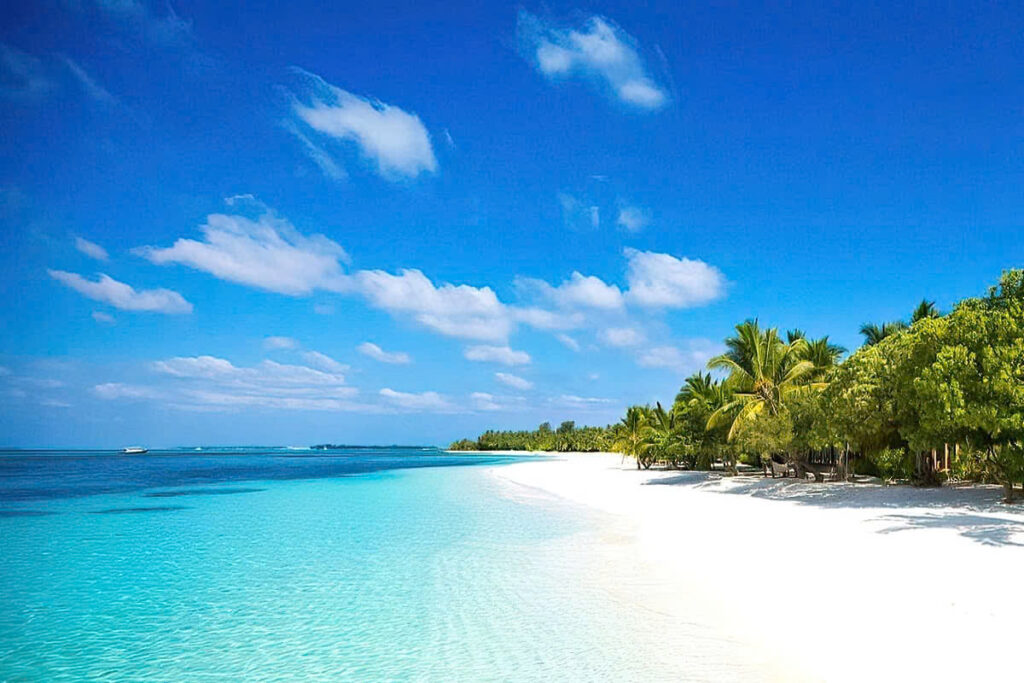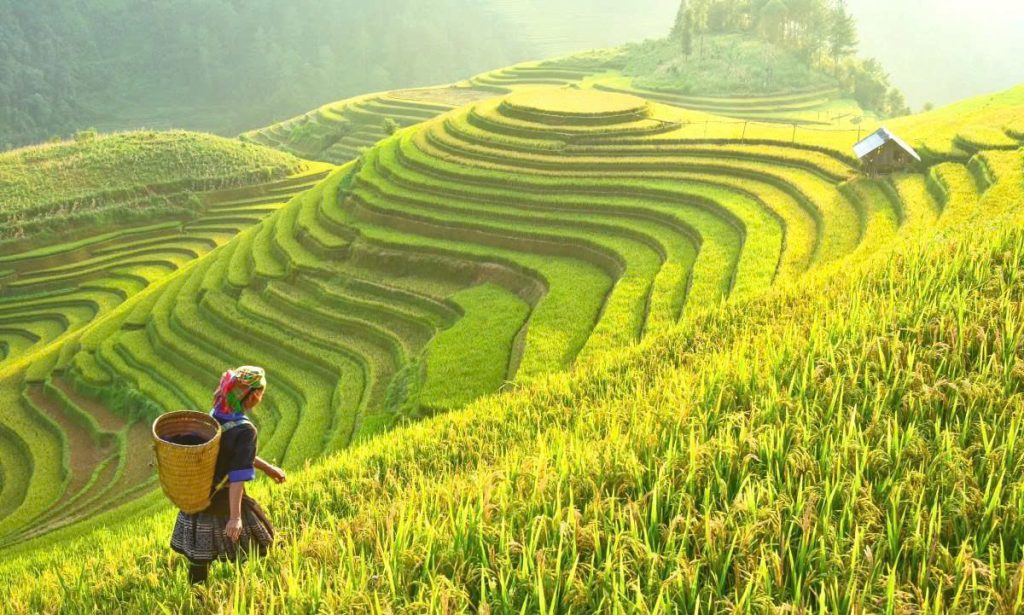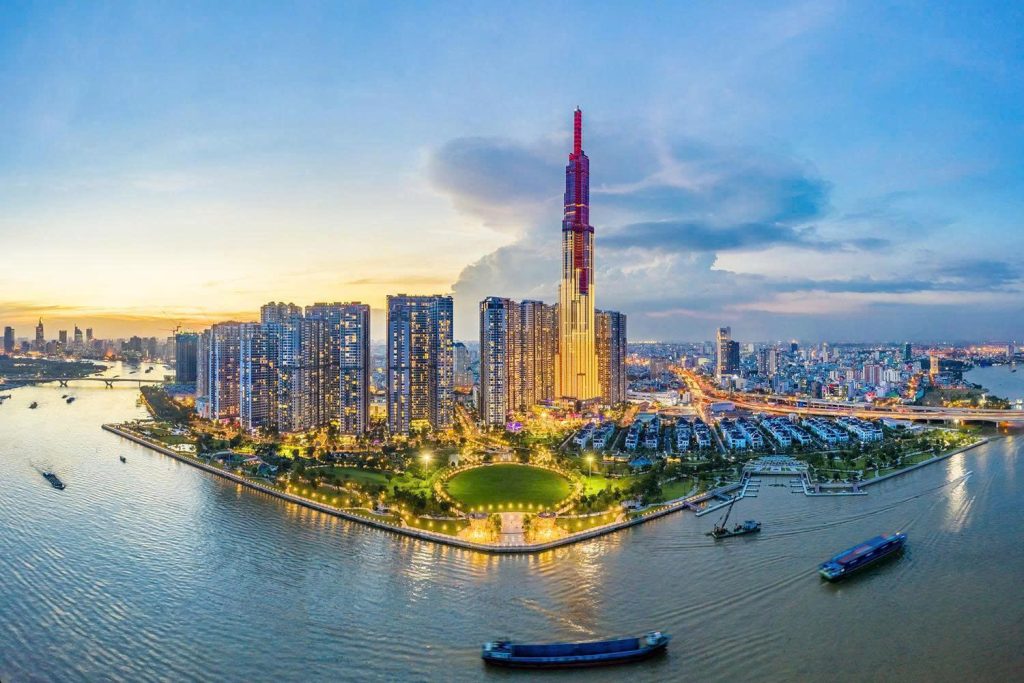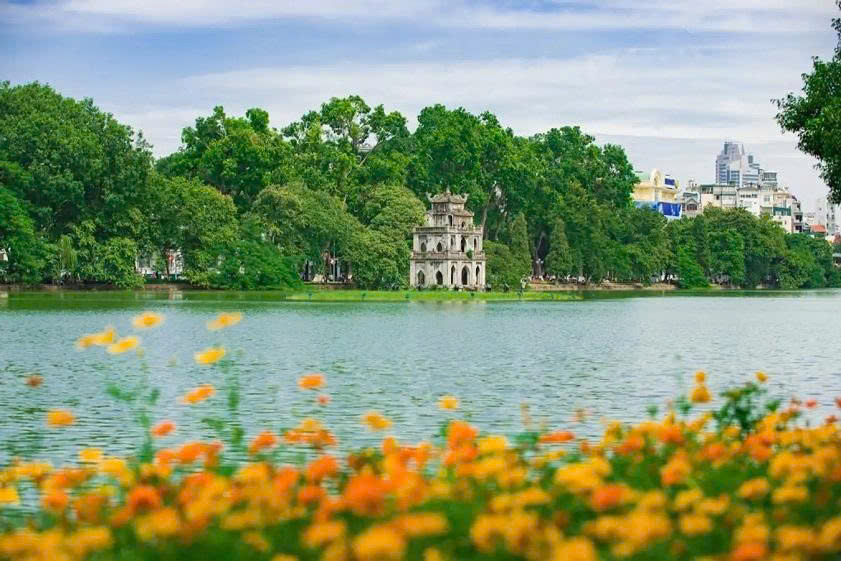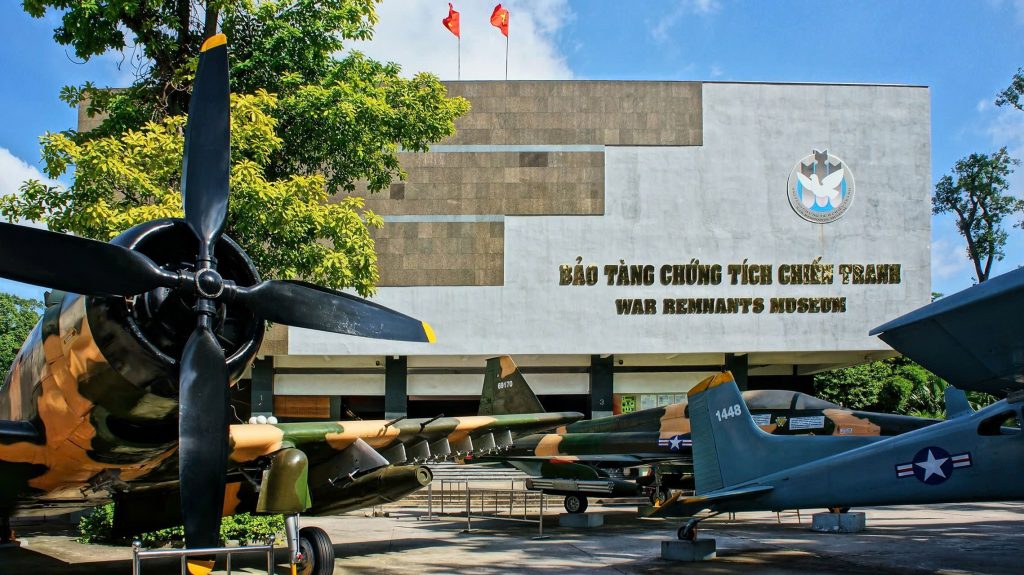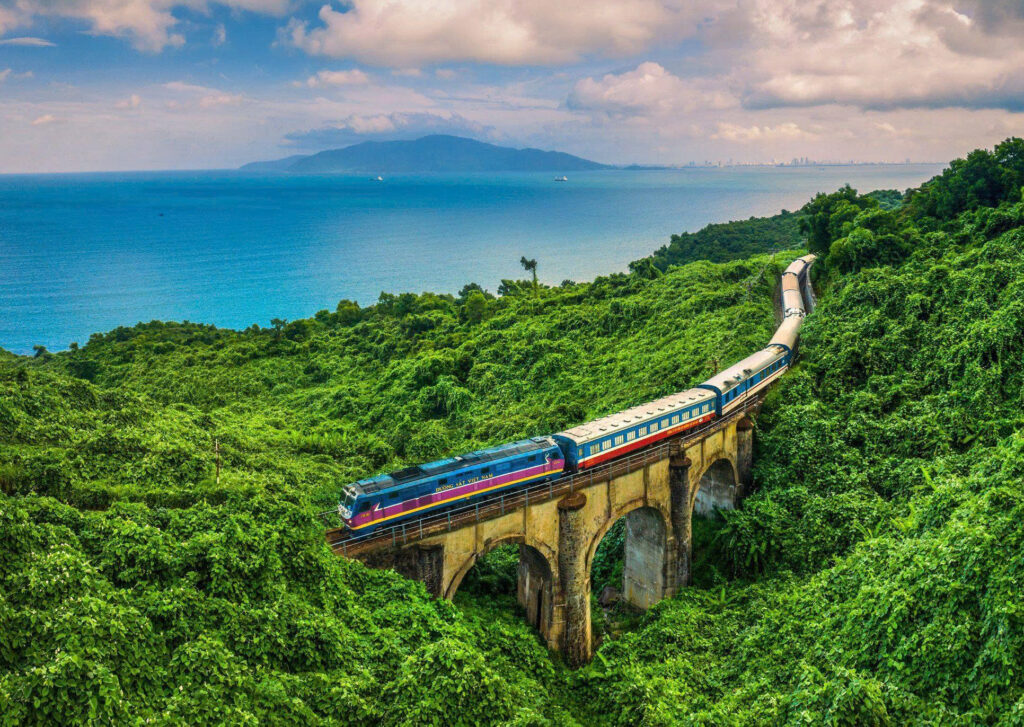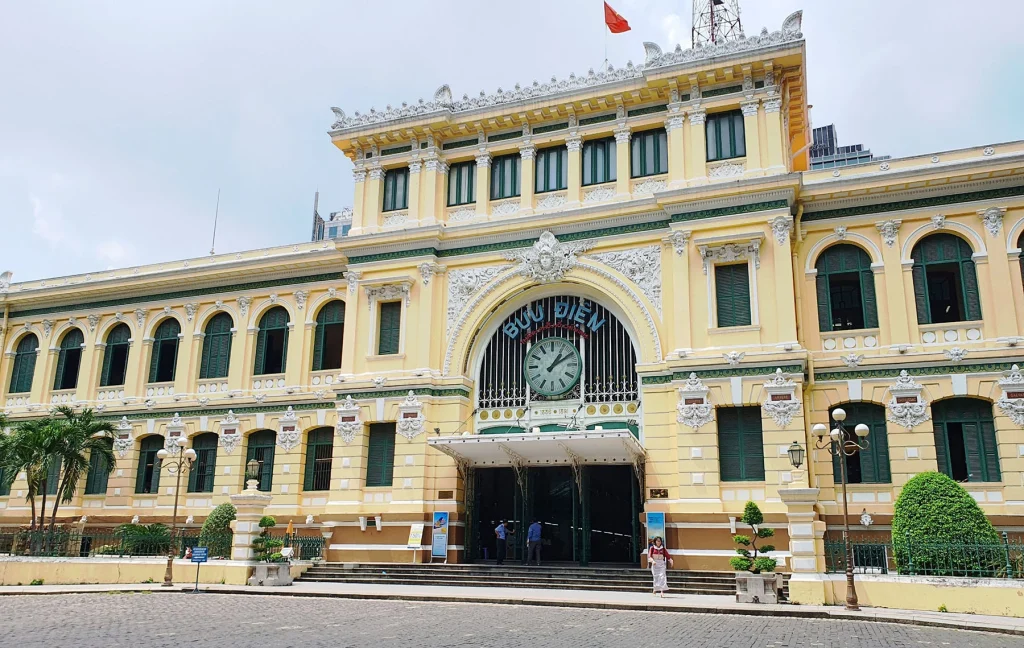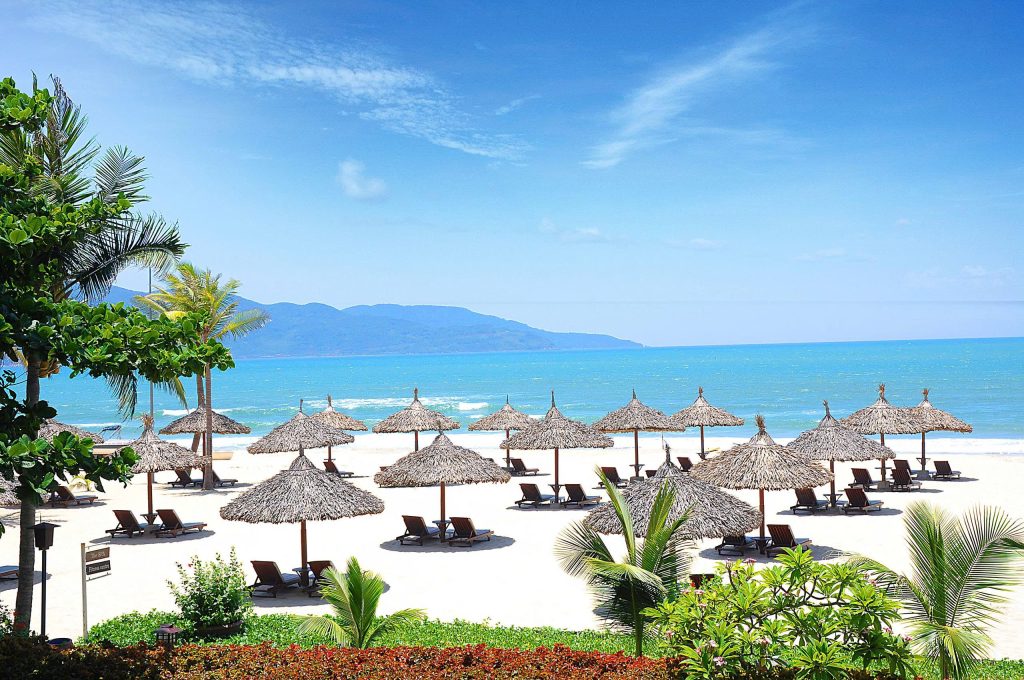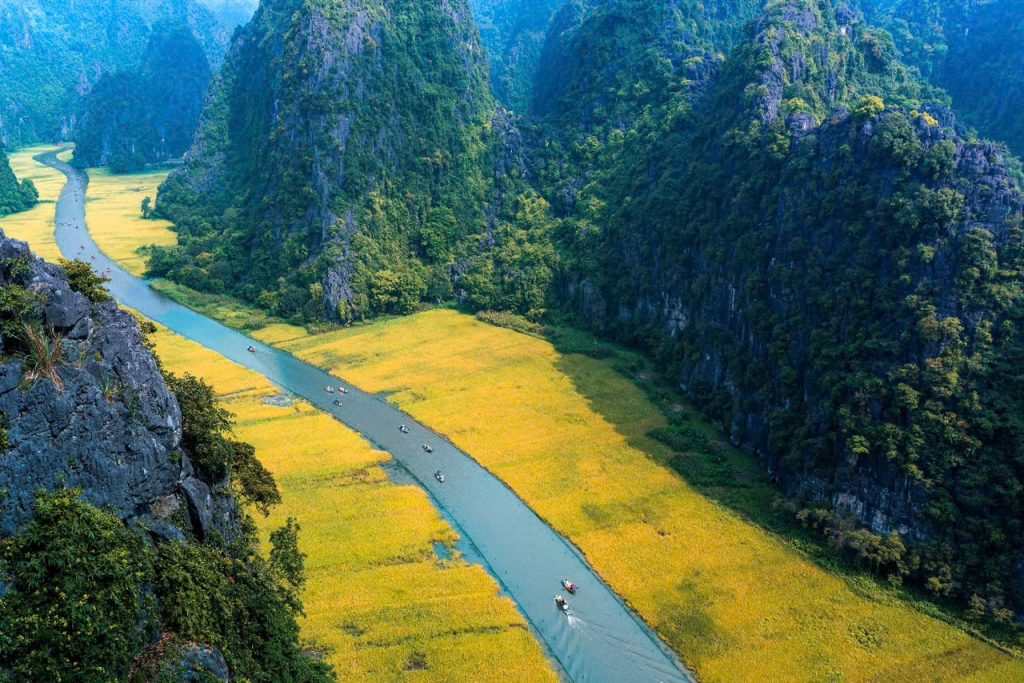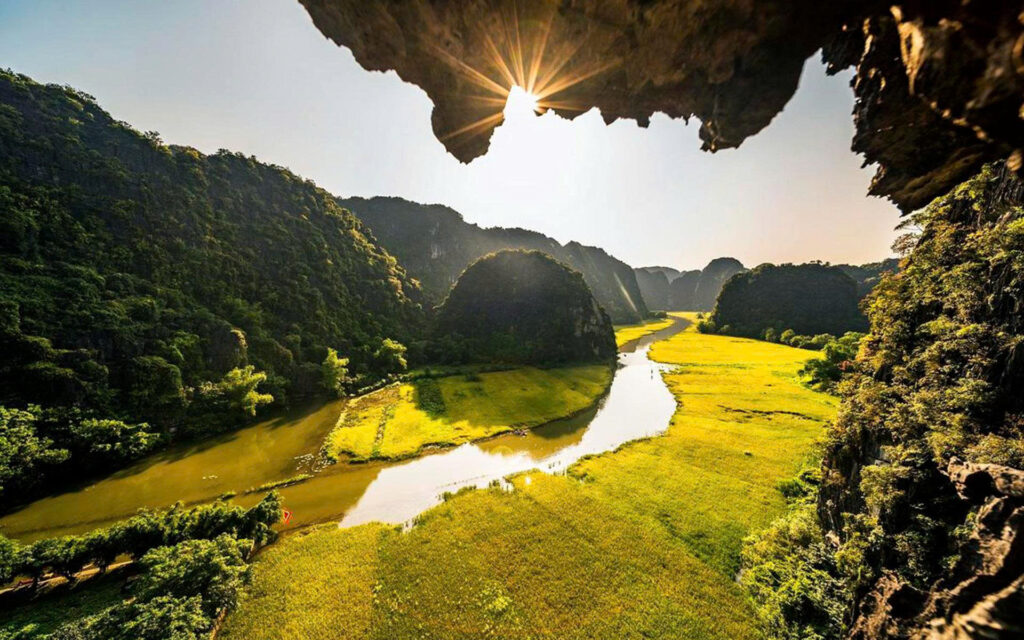Planning a journey through Vietnam, a nation celebrated for its dramatic landscapes, millennia-old history, and electrifying street life, is an adventure in itself. From the majestic limestone karsts of the north to the sun-drenched beaches of the south, Vietnam offers a dazzling tapestry of experiences. However, navigating its varied climate—stretching over 1,600 kilometers—can be challenging. The common question, “When is the best time to visit Vietnam?” requires a nuanced answer, one that accounts for regional climate shifts, your travel goals, and seasonal events.
In this article, we will provide month-by-month weather breakdowns, offer expert insights based on specific travel interests, and share practical, experience-based tips to help you pinpoint the precise window for your unforgettable Vietnamese expedition.
Understanding Vietnam’s Climate: A Tale of Three Regions
Vietnam’s distinctive S-shape profile creates a spectrum of weather conditions, dividing the country into three distinct climate zones. This geographical diversity is the key to mastering your travel calendar.
1. Northern Vietnam (Hanoi, Halong Bay, Sapa, Ha Giang)

The North is defined by four pronounced seasons, differentiating it sharply from the purely tropical south.
Winter (November – April): This period is generally cool and dry. Temperatures can drop significantly, especially in December and January, sometimes dipping to 10∘C (50∘F) in Hanoi. Mountainous areas like Sapa and Ha Giang can experience frost and near-freezing conditions, but the dry air makes trekking pleasant.
- Tip: The North in winter offers an atmospheric, misty experience, particularly in Halong Bay, which can be ethereal but less suitable for swimming. The misty conditions demand higher navigation caution for cruises.
Summer (May – October): This season is characterized by heat, high humidity, and significant rainfall. Expect afternoon downpours and temperatures often exceeding 35∘C (95∘F). The rainiest months are usually July and August. Typhoon risk is highest in August and September.
- Climate models suggest slightly warmer-than-average summers. Early bookings for May/June 2026 cruises are advised before the high humidity fully sets in.
Shoulder Seasons (March – April & October – November): These periods are universally considered the ideal time to visit the North. Temperatures are mild, sunshine is abundant, and humidity levels are comfortable, perfect for sightseeing and hiking.
RELATED: Hanoi Travel Guide: Discover Vietnam’s Ancient Heart
2. Central Vietnam (Da Nang, Hoi An, Hue, Phong Nha-Ke Bang)

Central Vietnam acts as a climatic bridge, but its weather is heavily influenced by the Truong Son mountain range, leading to sharp seasons in the coastal plains.
Dry Season (February – August): This is the hot and sunny season, making it perfect for beach holidays in Da Nang and Hoi An. Temperatures peak in June and July, often soaring above 37∘C (98.6∘F).
- Tip: This is the best time to explore the caves of Phong Nha-Ke Bang, as water levels are low and boat trips are reliable. Wear light clothing and schedule tours early in the morning to beat the midday sun.
Wet Season (September – January): The region experiences its heavy rainy season, which is often severe. Rainfall peaks between October and December, leading to frequent flooding, particularly in Hue and Hoi An, and a heightened risk of typhoons.
- Tip: Travel during this time is challenging. Historical sites in Hue and the ancient streets of Hoi An are often partially submerged. Always purchase comprehensive travel insurance covering natural disasters if traveling between October and December.
- Early indicators suggest the typhoon season might extend slightly later into January each year, making the late-November to December window still risky for coastal travel.
RELATED: 5-Day Central Vietnam Motorbike Itinerary: Ride the Best of Vietnam
3. Southern Vietnam (Ho Chi Minh City, Mekong Delta, Phu Quoc, Con Dao)
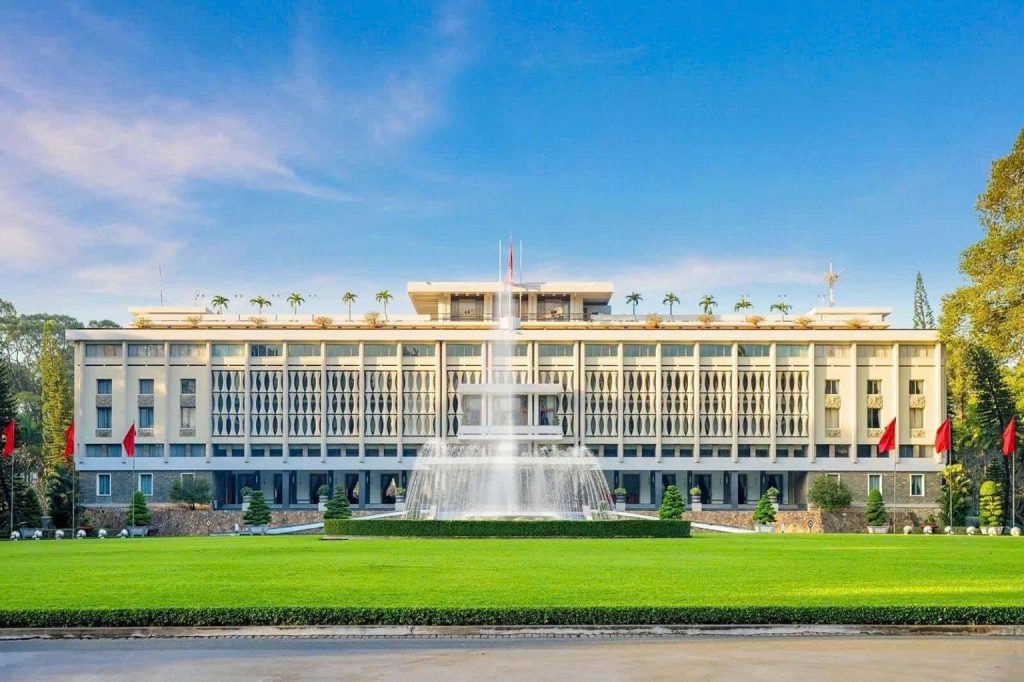
The South enjoys a true tropical climate, meaning consistent warmth throughout the year, with only two distinct seasons.
Dry Season (November – April): This period is defined by consistent warmth, abundant sunshine, and low humidity, making it the prime beach and island season. Temperatures are high but comfortable, peaking slightly in March and April.
- Tip: This is the perfect window for exploring the waterways of the Mekong Delta and relaxing on the beaches of Phu Quoc or Con Dao. Expect high hotel occupancy, especially around the Christmas/New Year holidays.
Wet Season (May – October): The wet season is characterized by short, heavy afternoon downpours, which typically last less than an hour before the sun returns. Humidity is higher, but the rain rarely disrupts travel plans significantly. May and June tend to be the rainiest.
- Tip: The rain often makes the scenery lush and green, offering great photographic opportunities, and the quick downpours help clear the air. Traffic in Ho Chi Minh City can become severely congested immediately after a major afternoon shower.
RELATED: Ho Chi Minh City Guide 2026: Culture, Food & Nightlife
Month-by-Month Weather & Travel Calendar

This detailed breakdown provides specific regional guidance for your trip planning, including crucial insights for the transition into 2026:
| Month | Northern Vietnam (Hanoi, Halong) | Central Vietnam (Hoi An, Hue) | Southern Vietnam (HCMC, Phu Quoc) | Travel Recommendation |
| January | Cool and dry (14∘C – 20∘C), ideal for trekking. | Pleasant, generally dry, end of the heavy rains. | Warm and sunny (24∘C – 32∘C). Prime beach weather. | Optimal Month. Excellent nationwide. Ideal for a full-country tour. Prepare for Lunar New Year (Tết) crowds towards the end of the month or early Feb. |
| February | Cool, dry, and often misty. Best time for Halong Bay cruises. | Dry season begins, warming up. Minimal rain risk. | Hot and dry. Ideal for the Mekong Delta. | Tết Nguyên Đán falls on February 17th. Expect significant price hikes and business closures for the first two weeks of the month. Book by October 2025. |
| March | Mild and pleasant (18∘C – 25∘C). Spring flowers bloom. | Hot, sunny, and very dry. Perfect beach weather in Da Nang. | Hot, temperatures begin to peak (26∘C – 35∘C). | Ideal Shoulder Season. Great weather for Hanoi, trekking in Sapa, and Central coast sunbathing. |
| April | Very pleasant, warm, and dry. Last chance for comfortable sightseeing. | Hot and dry. Hue Festival sometimes held this month. | Very hot, approaching peak temperatures. | Excellent month. Best for a balanced cultural and beach holiday. Avoid late April 2026 if sensitive to high heat. |
| May | Start of the wet, hot season. Afternoon storms become frequent. | Peak heat and dry season. Ideal time for Central coast beaches before typhoon season. | Wet season begins, with short, heavy afternoon showers. | Transition month. Prioritize Central Vietnam beaches or Northern mountains. High heat warning for the Central region. |
| June | Hot and humid, frequent heavy rain. | Very hot and dry. Challenging temperatures. | High humidity, heavy afternoon rain. | Focus on Central Beaches or indoor city activities. Least recommended month for trekking. |
| July | Peak of summer heat and rain. High humidity. | Still hot and sunny, but occasional rain may start to appear. | Heavy rainfall, often mid-afternoon. | Suitable for Central coast beach holidays despite the heat. Bring rain gear for the North and South. |
| August | Continues to be hot and very rainy. Highest risk of typhoons in the region. | Very hot and sunny, but typhoon season begins. | Rain remains heavy, though sunshine is still plentiful. | High risk of travel disruption in the North due to storms. Central coast remains hot and relatively dry. |
| September | Rainfall starts to decrease; cooler temperatures begin. Rice harvest in Sapa/Ha Giang. | Heavy rainy season begins. High risk of flooding and typhoons. | Rainfall begins to decrease, cooling slightly. | Excellent month for the North’s mountain regions. Avoid Central Vietnam. |
| October | Delightful and dry. Mild temperatures (20∘C – 28∘C). Perfect for Hanoi and Halong Bay. | Peak of the rainy season. Flooding is common; travel is not recommended. | Dry season begins. Warm and sunny, ideal for beach recovery. | Best Month for North and South Tour. Avoid Central Vietnam due to weather. |
| November | Cool and dry. Ideal trekking weather in Sapa. | Rain starts to ease, but high risk remains. Hue and Hoi An still prone to flooding. | Dry season is in full swing. Warm, sunny, and perfect for the islands. | Prime Month for a relaxed, comprehensive trip across all regions. travel planning should start now. |
| December | Cool and dry. Ideal for city tours and trekking. Low risk of rain. | Warming up, rainfall continues to decrease, becoming more stable. | Warm, sunny, and very dry. Peak season for Southern islands. | Prime Month. Excellent weather nationwide. Book early for Christmas/New Year time. |
Tailoring Your Visit: Best Times for Specific Interests
Your personal goals are paramount when determining the best time to travel. Different activities are best suited to specific seasonal windows.
1. Beach Holidays and Diving
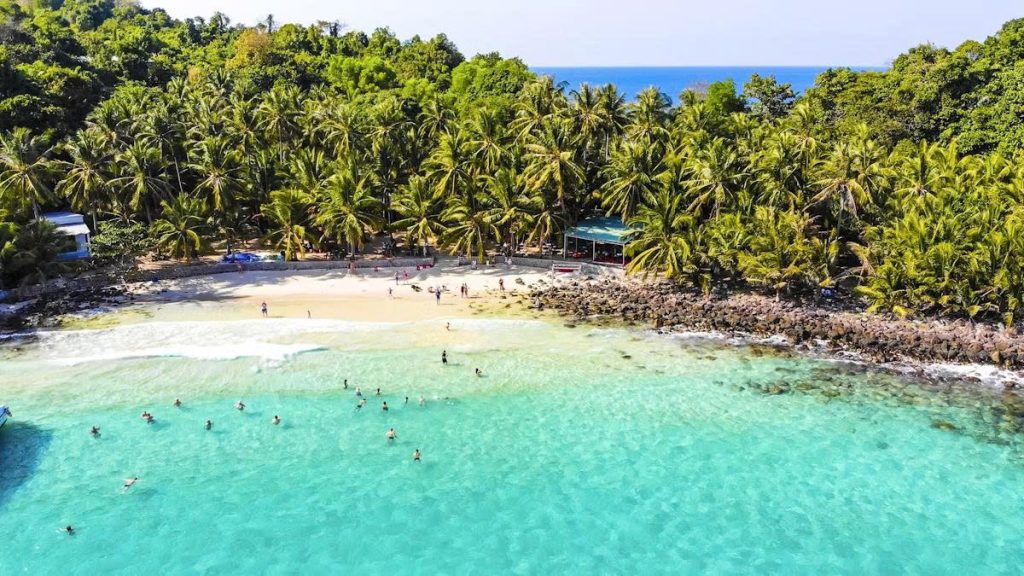
| Region | Best Time to Visit | Why | Insight |
| Southern Islands (Phu Quoc, Con Dao) | November to April each year | Consistently sunny, dry, and warm. Water visibility is excellent for diving and snorkeling. | Peak water visibility is typically Jan/Feb. Book accommodation early for this window. |
| Central Coast (Da Nang, Hoi An, Mui Ne) | February to August each year | Hot, dry season offers reliable sun. Avoid October–December due to heavy rain and typhoon risk. | Expect scorching temperatures in June/July. Prioritize morning beach time. |
| Typhoon Season Alert | June to November | While Central and Southern beaches may be sunny, this is the general typhoon season. Always monitor weather for the entire region during this period. | The highest risk zone remains Central Vietnam (Da Nang to Hue). |
RELATED: Perfect Phu Quoc 4 Day 3 Night Itinerary: Beaches, Fun, and Food
2. Mountain Trekking and Adventure (Sapa, Ha Giang Loop)
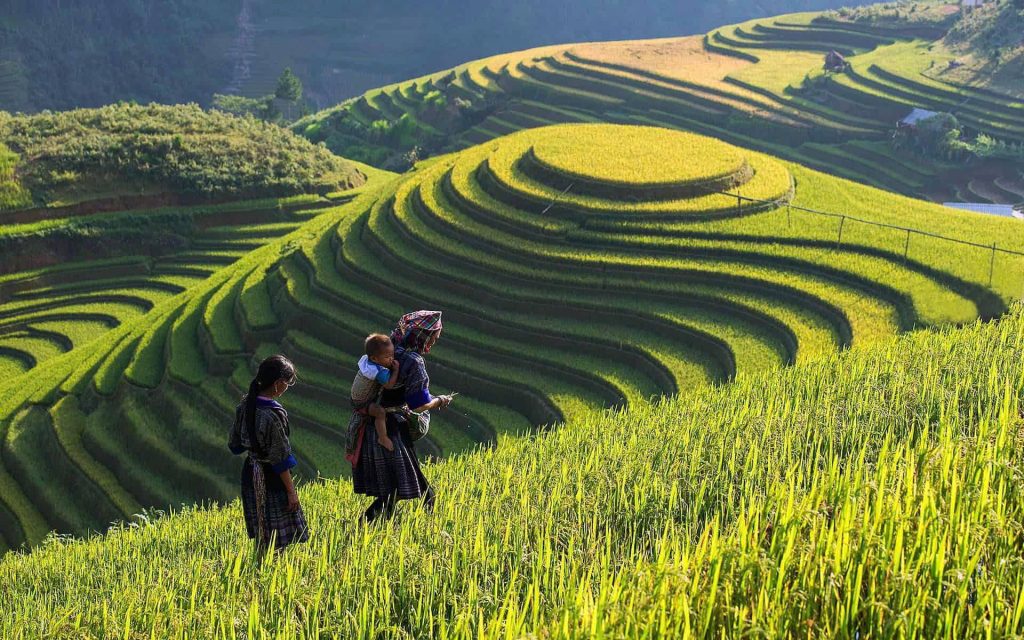
The quality of a mountain trek depends heavily on visibility, temperature, and rice-paddy conditions.
- September to November (The Golden Season): The absolute best time. Temperatures are cool and dry, skies are clear, and the rice paddies are a dazzling golden yellow during the harvest (late September/early October). This offers the best photographic conditions.
- March to May (Spring Bloom): Excellent, mild temperatures, perfect for comfortable trekking. The downside: the rice paddies may be fallow or recently planted, offering less vibrant colors.
- Warning: Avoid the summer (June-August) due to heavy rain, muddy trails, and persistent mist, which severely reduces visibility on the Ha Giang Loop and Sapa.
3. City Exploration and Cultural Tours (Hanoi, Ho Chi Minh City, Hue)
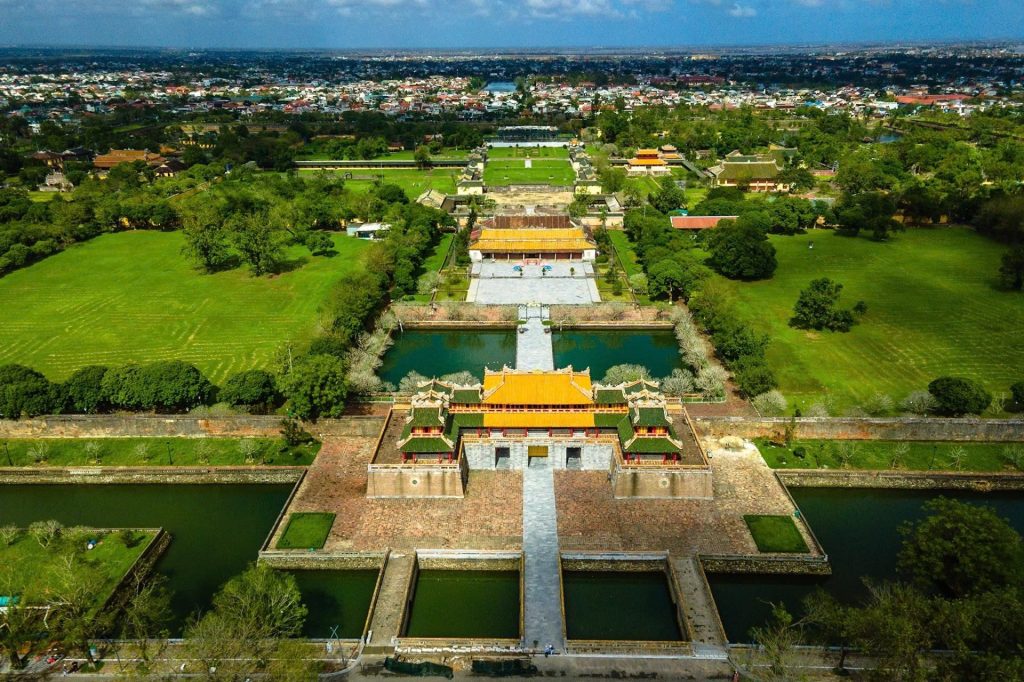
Cities are accessible year-round, but comfort levels vary drastically.
- Hanoi (North): March-April (Spring) and October-November (Autumn) are the most comfortable seasons for walking the Old Quarter and visiting historical sites, due to mild temperatures and low humidity.
- Ho Chi Minh City (South): November to April (Dry Season) is the easiest time for exploration. The wet season (May-October) is manageable, but schedule indoor activities for the afternoon when the intense, short showers hit.
- Hue (Central): January to April offers the best dry weather for exploring the vast Imperial Citadel and tombs without oppressive heat or flooding.
RELATED: Top Things to Do in Hue: The Ultimate Guide
4. Cruises and Waterway Discoveries (Halong Bay & Mekong Delta)

- Halong Bay Cruises: October to April is best, providing clear skies and low rainfall risk. December to February can be misty and cold, which reduces swimming appeal but creates a magical, ethereal atmosphere ideal for photography. Cruises rarely cancel, but high winds/fog can restrict routes.
- Mekong Delta Discoveries: November to April (Dry Season) is ideal for sunny, pleasant boat trips. However, the Wet Season (May-October) brings higher water levels, making some hidden canals more accessible to small boats, offering a unique perspective, albeit with higher humidity.
RELATED: Mekong Delta: Vietnam’s Verdant Heart and a Journey of Discovery
A Deeper Dive: Festivals, Crowds, and more
Vietnam’s calendar is punctuated by significant events that offer profound cultural experiences but require careful planning.
Major Festivals and Cultural Events
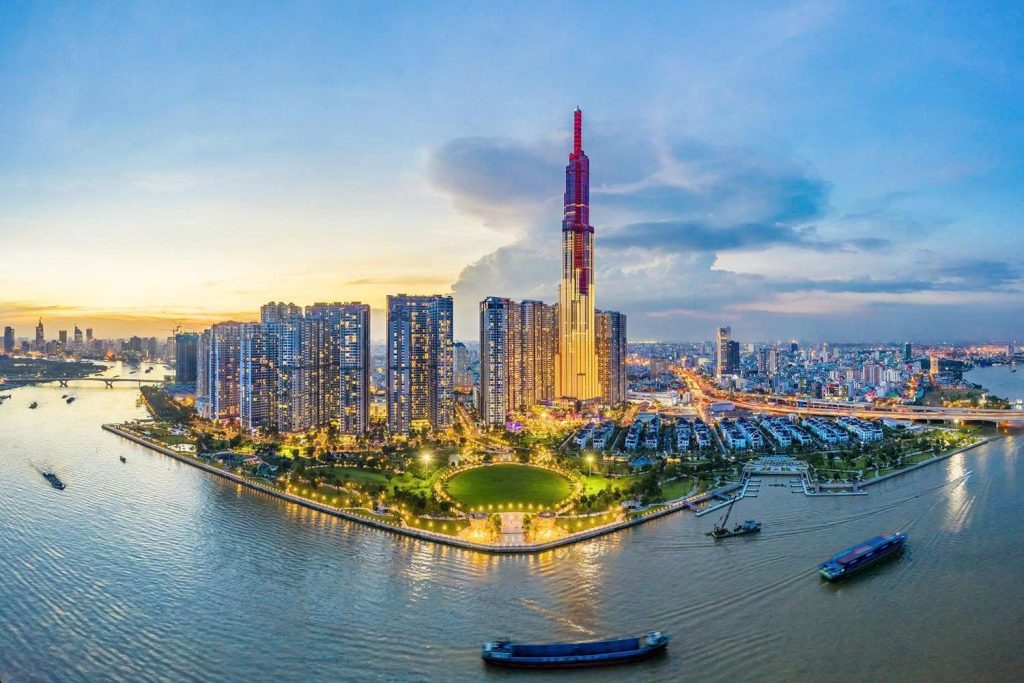
Tết Nguyên Đán (Lunar New Year)
- When to Visit: Tuesday, February 17, 2026.
- What to Expect: This is the most important holiday. Expect extreme congestion in domestic transport as millions travel home. Prices for accommodation and travel are highest. Most shops, restaurants, and businesses close for 4-7 days.
- Tip: If you choose to travel during Tết, stay in one large city (Hanoi or HCMC) to enjoy the unique, festive atmosphere and book EVERYTHING by November 2025.
Hue Festival:
- When to Visit: Usually occurs every two years, often in April or May. Check official schedules for the 2026 date.
- What to Expect: A spectacular, multi-day celebration of Vietnamese Imperial culture, music, and art. The city becomes incredibly crowded.
Mid-Autumn Festival (Tết Trung Thu):
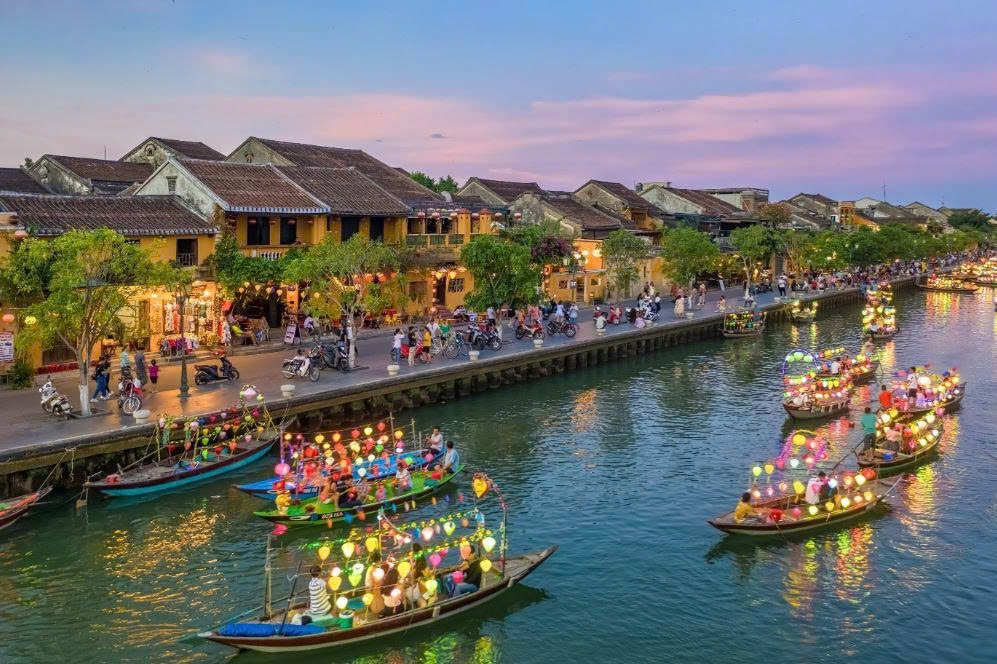
- When to Visit: Typically September or October.
- What to Expect: A major festival focused on children, featuring lion dances, lantern parades, and mooncakes. Hoi An is particularly stunning, with thousands of lanterns lighting up the Ancient Town.
Peak vs. Shoulder Season Dynamics
Understanding tourist flow can drastically improve your experience and budgeting.
Peak Season (November – March): This period offers the best weather nationwide, making it the most popular time for Western tourists.
- Highlights : Perfect weather, all services open.
- Considerations: Highest prices, high demand for accommodation, popular sites (like Halong Bay and Sapa) are crowded.
Shoulder Season (April, May, September, October): These months offer a good balance of weather and fewer crowds.
-
- Highlights: Lower prices, moderate crowds, excellent weather in one or two regions (e.g., North in October, Central in May).
Low Season (June – August): Defined by heat and rain, but offers unique advantages.

- Pros: Lowest prices (especially for flights/resorts), ideal for Central coast beaches (like Da Nang), very few crowds.
- Cons: High heat/humidity, heavy rain risk in the North/South.
Practical Tips for Your Vietnam Journey
Regardless of your chosen travel window, these essential tips, gleaned from practical experience, will ensure a smoother journey:
1. Packing and Attire
- Layers are Key: Given the extreme North-South and mountain-coast climate variance, packing layers is non-negotiable. You may need a light jacket in Hanoi in January but shorts in HCMC on the same day.
- Lightweight Fabrics: Prioritize linen, cotton, and other lightweight, breathable fabrics to manage the humidity and heat.
- Rain Gear: If traveling between May and October, a quality, lightweight rain jacket or compact umbrella is essential, especially for afternoon downpours in the South.
- Footwear: Bring sturdy, waterproof shoes for trekking (Sapa/Ha Giang) and comfortable sandals for city walking and beaches.
2. Health and Safety
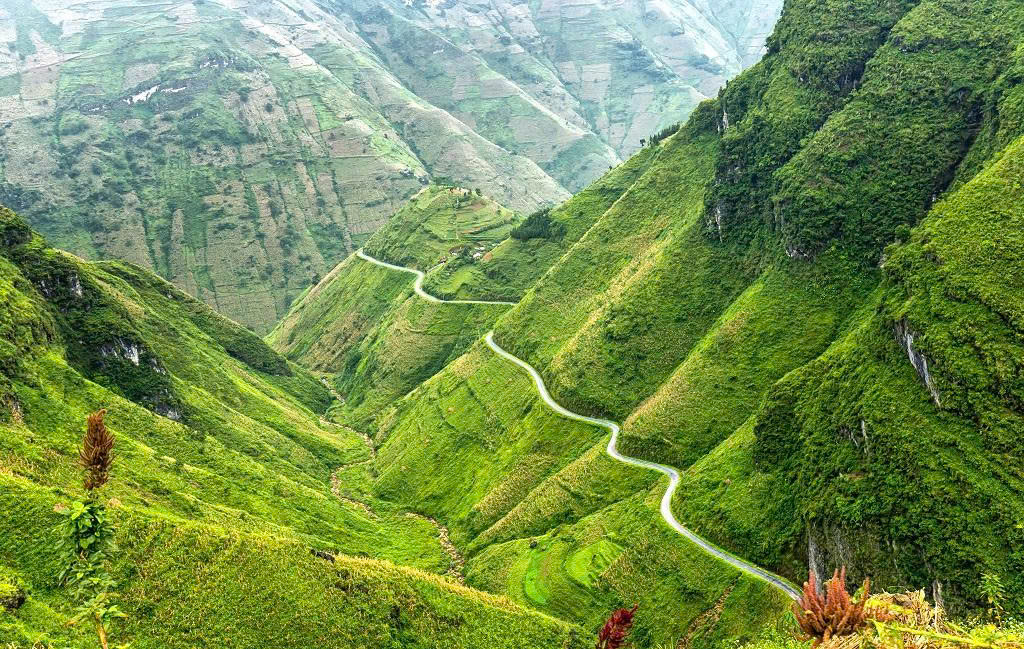
- Hydration is Crucial: Vietnam is hot and humid, leading to quick dehydration. Carry a reusable water bottle and drink frequently, particularly when sightseeing or trekking.
- Sun Protection: Even during the North’s “winter,” the sun is strong. Sunscreen (SPF 30+), sunglasses, and a wide-brimmed hat are vital for all regions.
- Mosquito Repellent: Essential, especially during the wet season (May–October) in the South and Mekong Delta, to protect against mosquitoes.
3. Booking and Flexibility
- Book Peak Season Early: For travel between November and April, and especially around Christmas, New Year, and Tết, book all accommodation and major internal transport (flights, sleeper trains) at least 3-6 months in advance to secure reasonable prices and availability.
- Flexibility with Weather: Vietnamese weather can be unpredictable. Have a backup plan (e.g., museums, coffee shops) for unexpected heavy rain. Be prepared to adjust travel days slightly if a severe typhoon warning is issued for the Central coast.
- Local Transportation: Utilize local transport options:
- Grab, Xanh SM (Ride-hailing): The most reliable app for taxis and motorbike rides in major cities (Hanoi, HCMC, Da Nang).
- Internal Flights: Highly recommended for covering long distances quickly (e.g., Hanoi to HCMC).
- Reunification Express (Train): A great option for overnight travel between cities (e.g., Hanoi to Hue) for a more scenic and comfortable journey.
RELATED: North vs South Vietnam: Which Region Should You Explore First?
Ultimate Seasonal Planning Summary
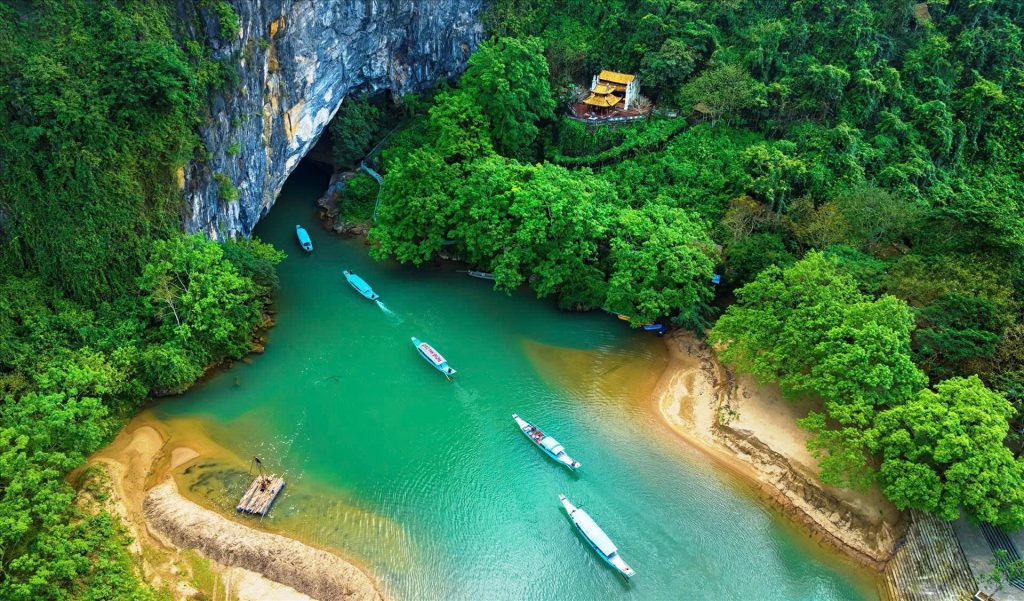
To wrap up, here’s a final look at which season aligns best with your travel style:
| Season | Months | Ideal Traveler Profile | Destinations |
| Cool & Dry (Peak) | November – March | First-time visitors, beach lovers, those seeking comfort and reliable weather. | Phu Quoc, HCMC, Hanoi, Halong Bay (misty charm), Sapa (dry trekking). |
| Hot & Dry (Central Focus) | February – May | Beach lovers focused on the Central region (Hoi An, Da Nang) and those wanting to avoid the crowds in the North. | Hoi An, Da Nang, Phong Nha Kẻ Bàng, Sapa (spring bloom). |
| Hot & Wet (Low Season) | June – August | Budget travelers, those who don’t mind rain, and dedicated Central coast sun-seekers. | Da Nang, Hoi An (beaches), HCMC/Mekong Delta (lush scenery). |
| Transition & Harvest | September – October | Trekkers, photographers, and travelers focusing on the North’s stunning rice harvest. | Sapa, Ha Giang Loop, Hanoi, HCMC (October start of dry season). |
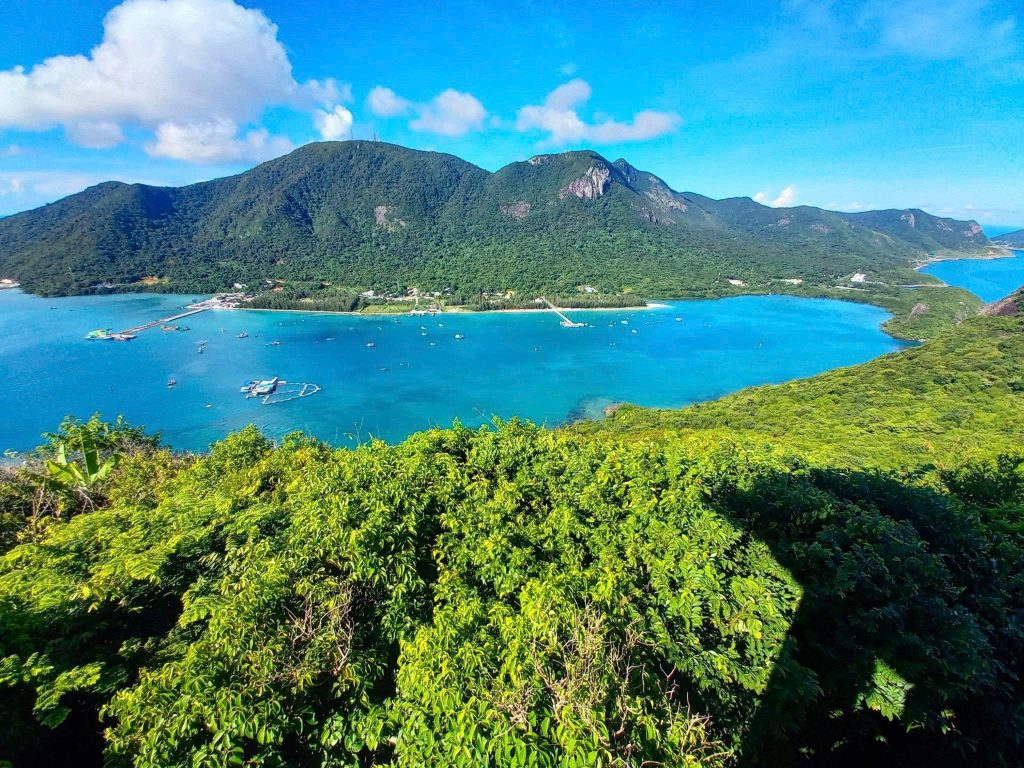
Frequently Asked Questions (FAQs)
Timing and Climate
- When is the single best time to visit all three regions? The ideal window is November to April, offering the best cool and dry weather nationwide.
- When should I avoid traveling to Central Vietnam (Hoi An/Hue)? You should generally avoid October to December due to high flood risk and severe typhoon season.
- How does the rain affect the South (HCMC/Phu Quoc)? Expect short, heavy afternoon downpours (May–Oct); they rarely disrupt full-day plans.
Activities and Planning
- What is the best time for Northern mountain trekking? September to November is best for clear skies, cool weather, and the spectacular golden rice harvest.
- What is the most important advice for traveling during Tết (Feb 2026)? Book everything 3–6 months in advance; anticipate closures and the highest prices.
- Do I need warm clothes if I travel in January? Yes. The North (Hanoi/Halong) can be surprisingly cold, often dropping to 10°C–14°C (50°F–57°F).
RELATED: Digital Nomad in Vietnam: Best Cities, Costs, and Tips
Ultimately, the best time to visit Vietnam is the one that aligns perfectly with your travel priorities. While the period from November to April offers the most comprehensive favorable weather for a nationwide tour, truly mastering the Vietnamese climate means respecting its regional shifts—prioritizing the Central Coast’s sunshine from February to August and the North’s golden harvest in the fall.
By leveraging these climate insights and practical tips—from booking Tết travel months ahead to packing layers for the North’s chilly winter—you move beyond guesswork. Your journey will be smoother, more enjoyable, and truly seamless. Vietnam’s captivating blend of history, culture, and nature is waiting; now is the time to finalize your plans and embark on an unforgettable adventure in this beautiful country.

